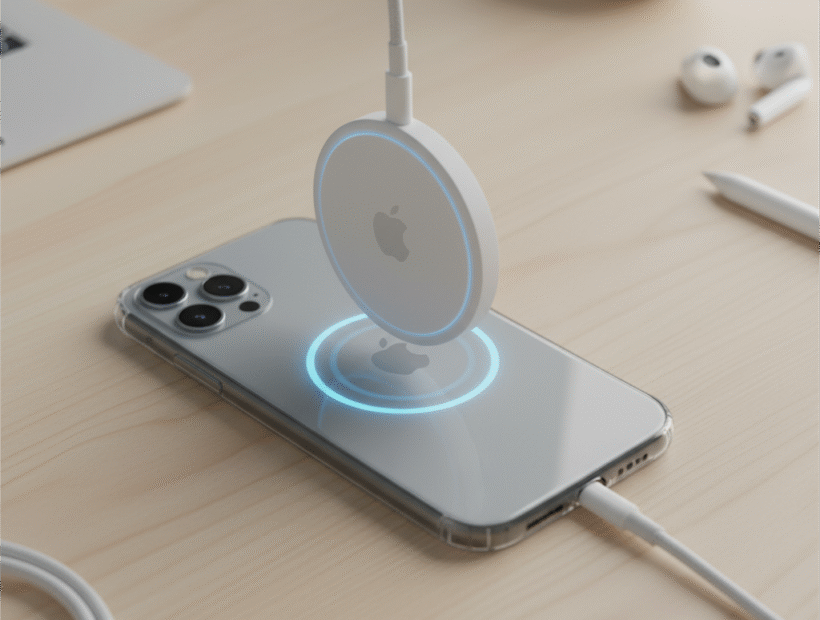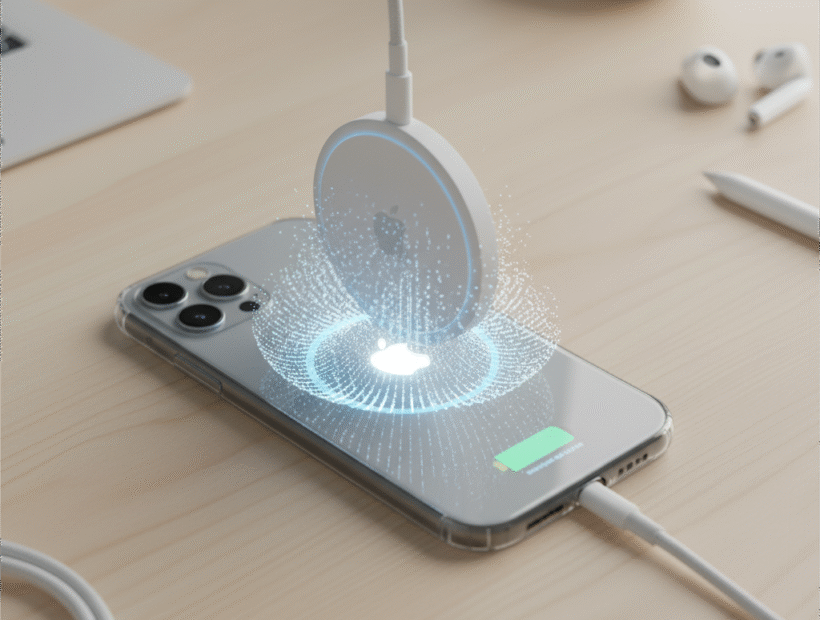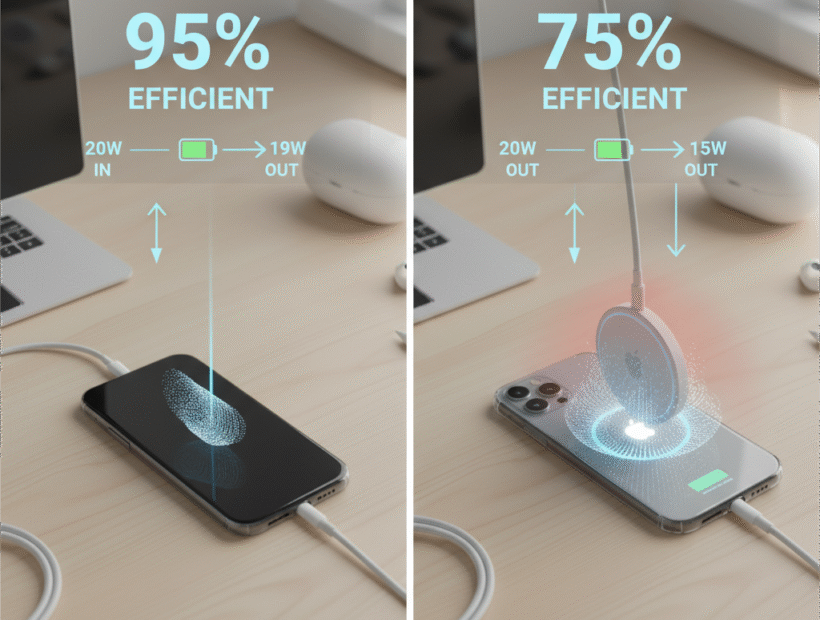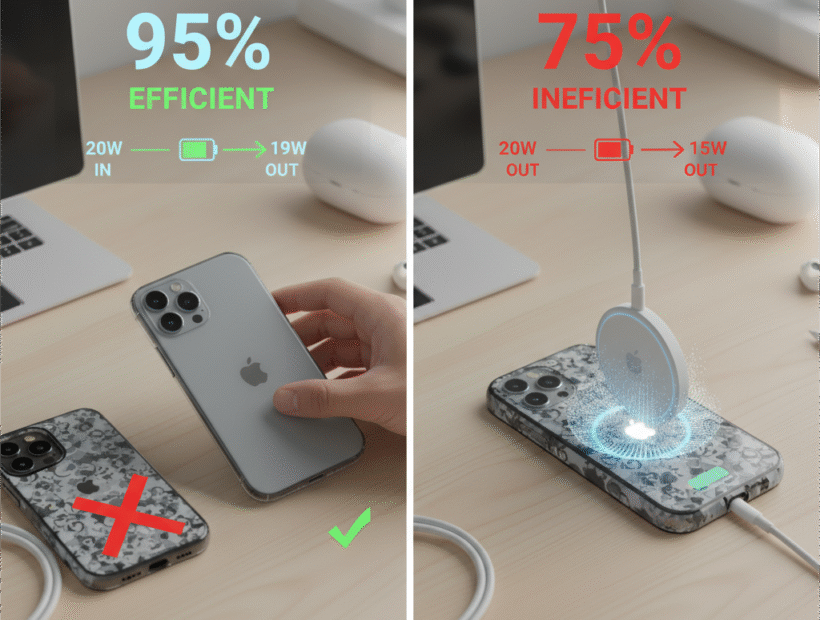Table of Contents
If you’ve ever wondered, “Does a MagSafe charger use more power than a regular charger?” the short answer is yes—but only slightly. A MagSafe charger can provide up to 15W of wireless power to compatible iPhones. However, it uses magnetic wireless charging, which often consumes more electricity than wired charging
This doesn’t mean MagSafe is not efficient. It just needs a bit more power because of energy loss during wireless transfer

How MagSafe Charging Works
To understand why a MagSafe charger may use more power, let’s break down the process:
Magnetic Alignment: A ring of magnets ensures the charger aligns perfectly with your iPhone.
Wireless Power Transfer: Energy is transmitted through electromagnetic induction.
Conversion Loss: Some energy is lost as heat during transfer, making it less efficient than wired charging.
While a wired Lightning or USB-C connection delivers power directly, wireless charging always involves some energy loss.

Power Consumption: MagSafe vs Wired Charging
Here’s a quick comparison of charging efficiency:
| Charging Method | Power Input | Power Delivered to iPhone | Efficiency |
|---|---|---|---|
| Wired Lightning/USB-C | ~20W | ~18–19W | 90–95% |
| MagSafe Charger | ~20W | Up to 15W | 70–80% |
| Standard Qi Charger | ~10W | ~5–7W | 50–70% |
As you can see, MagSafe chargers use slightly more power than wired charging, but they are more efficient than many standard Qi wireless chargers.

Why Does a MagSafe Charger Use More Power?
There are three main reasons:
- Wireless energy loss: Some power is always lost as heat.
- Stronger alignment magnets: MagSafe needs a consistent connection, which draws stable input power.
- Background system use: iPhones often stay active longer while charging wirelessly (due to screen wake-ups and notifications).
How to Reduce Power Usage with MagSafe
If you love the convenience of MagSafe but want to limit unnecessary power consumption, try these tips:
- Use a certified MagSafe charger (third-party cheap chargers may waste more energy).
- Charge with a 20W USB-C adapter recommended by Apple.
- Avoid charging in hot environments, since heat increases energy loss.
- Remove thick or non-MagSafe cases to reduce resistance.
For more guidance on magnetic charging solutions, explore CORT MAGNET’s magnetic products.

Is MagSafe Bad for the Environment?
Some eco-conscious users worry that if MagSafe chargers use more power, they may have a bigger environmental footprint. While this is technically true, the difference is relatively small for individual users.
- Wired charging is still the most energy-efficient.
- MagSafe offers superior convenience and alignment, reducing wasted charging attempts.
- Using renewable energy at home (like solar) offsets any additional energy use.
For businesses designing eco-friendly charging solutions, choosing high-quality magnets and components can make MagSafe more sustainable.
Should You Choose MagSafe Over Wired?
The decision comes down to priorities:
- Choose MagSafe if: convenience, easy alignment, and accessory compatibility matter most.
- Choose wired charging if: maximum efficiency and fastest speeds are your goals.
Ultimately, while a MagSafe charger does use more power than wired charging, it strikes a balance between efficiency and usability, making it a popular choice among iPhone users.
Contact us to obtain free samples
CORT is a manufacturer specializing in the production and sales of magnets.
Final Thoughts
So, does a MagSafe charger use more power? Yes, but only slightly more compared to traditional wired charging. With efficiency improvements and smarter accessories, the difference is minimal for most users.
If you want to learn how magnetic technology works, check out MagSafe. You can visit CORT MAGNET’s custom magnetic solutions for more information.


